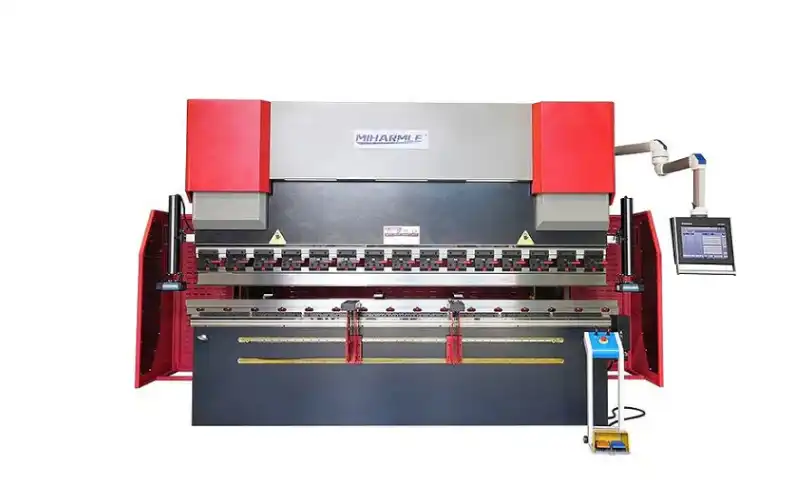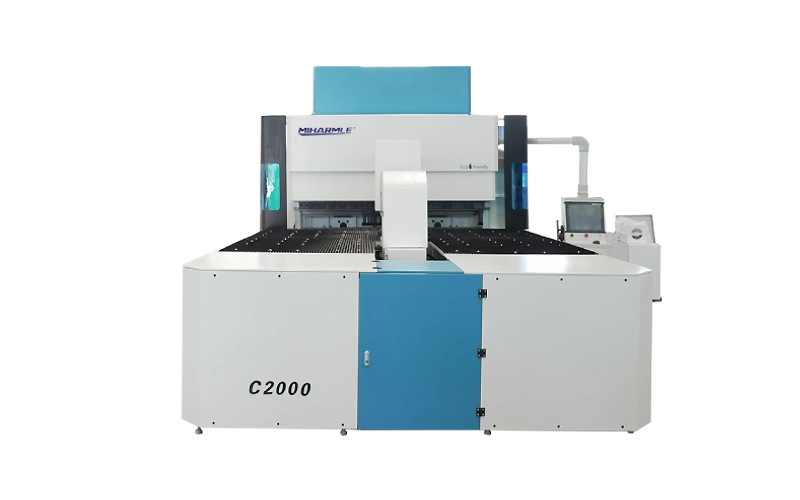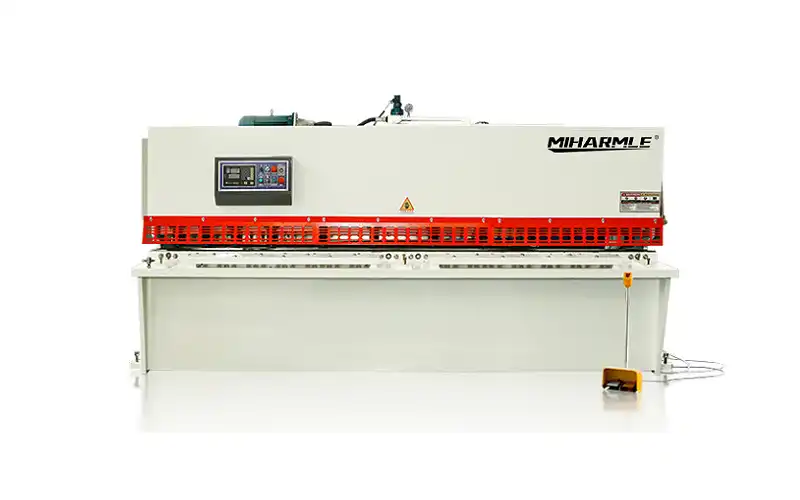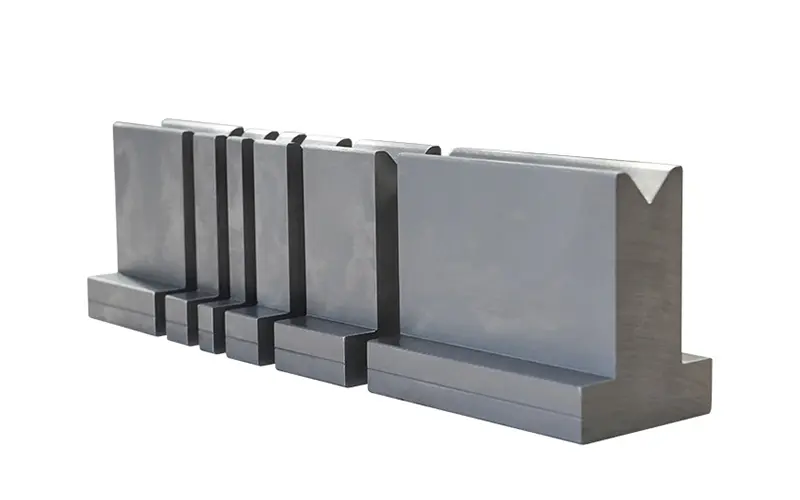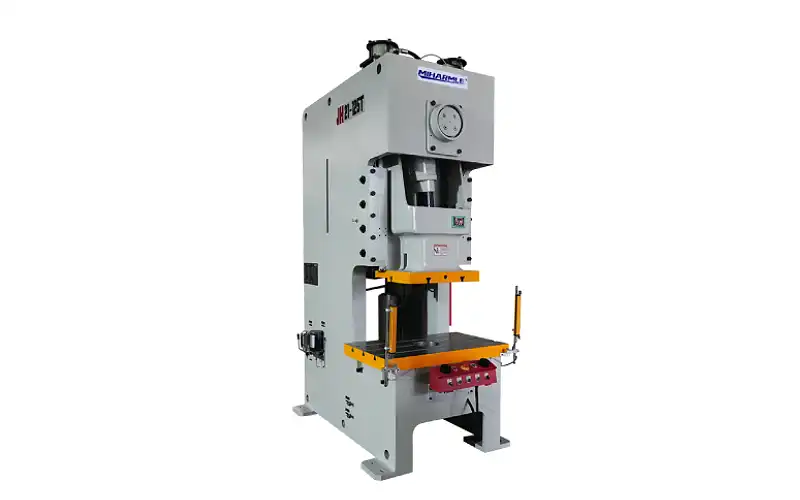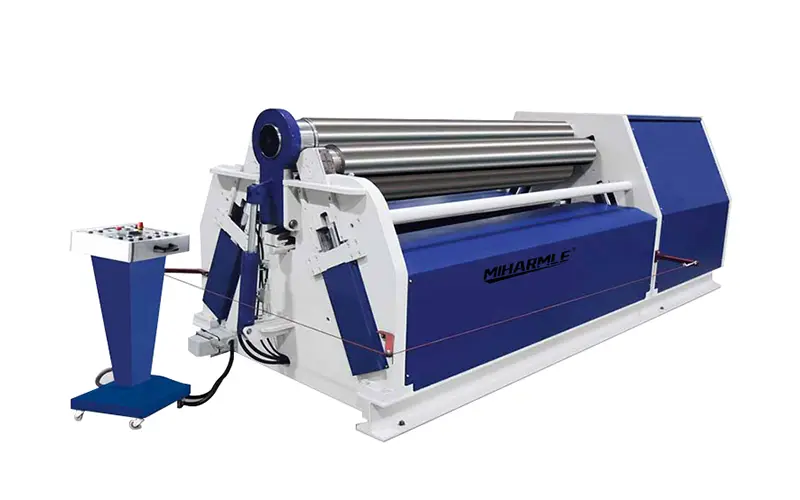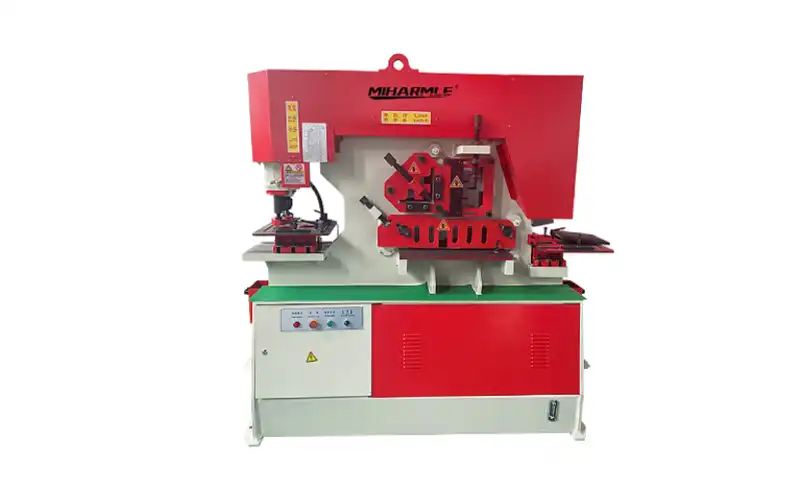
Metalworking is the heart of many manufacturing industries. It allows manufacturers to fabricate any material and make valuable products. Metalworking involves using cutting-edge hydraulic ironworker machines to perform different tasks. But many people don’t know: What is a hydraulic ironworker machine?
That can be a severe concern if you don’t have know-how about these machines. Understanding their working is paramount for efficient metalworking. Small mistakes while operating these machines can have serious consequences. But fret not in case you’re a noob to these machines. This guide will give all of the understanding!
What is a Hydraulic Ironworker Machine?
A hydraulic ironworker is a specialized machine that handles metal fabrication tasks. It is a very versatile industrial equipment that performs various operations. Those include cutting, bending, punching, and notching metal pieces. It operates with the help of a dedicated hydraulic system.
What I like about these machines is their precision. Moreover, they can easily handle all types of metal thicknesses. You may wonder why it is named an ironworker, whereas it works with all metals. It was specially invented to fabricate iron and steel. That’s why it is called an ironworker. With time, these machines evolved.
Manufacturers added newer features and enhanced their functionality. Now, they can work with different materials. It has robust components to handle the thicknesses of all metals. These hydraulic ironworker machines are widely used in metalworking industries. You must have seen large plates and sheets of various metals.
These sheets are used in construction, automobiles, and other appliances. All thanks to these technical machines that shape those metal pieces and reduce human efforts. Industrial-scale metalworking would be incomplete without these machines. They make heavy-duty tasks very simple and complete quickly.
How Does Hydraulic Ironworker Work?
As suggested by the name, these machines work on the principle of hydraulic pressure. The machine mainly contains a hydraulic system, workstation, and control panel. The hydraulic system itself consists of many different components that make it work. Here is their list:
- Motor
- Pump
- Hydraulic fluid
- Hydraulic cylinder
Remember that the hydraulic system is a critical component in these machines. The working of ironworkers depends on these hydraulic systems. Let’s discuss how these machines work. First of all, the hydraulic system uses oil to produce high pressure. This high pressure or force is used to run different components of these machines.
Those components include a punch station, a shear station, and a notch station. These components have sharp blades to perform specific tasks. Due to hydraulic pressure, these components start to work. Remember, all components run separately and do particular tasks. For example, notching stations will only perform notching tasks.
On the flip side, the bending station will only bend metal. You must place your material under a specific notch. For example, if you require metal notching, put it on a notch station. Apart from this, these machines have a control panel. This panel consists of a lever, button, or foot pedal.
These control panels play a crucial role in giving you control over the working of these machines. You’ll be able to regulate the speed and precision of all components. How? These buttons come with adjustable settings to control hydraulic pressure. This pressure directly controls the speed of the whole system.
Main Functions of a Hydraulic Ironworker Machine
An ironworker machine is versatile in its functionality. It can perform several functions at once, which saves time and effort. Are you curious about learning about each of those functions? Let’s discuss them in detail in the section below.
1- Punching
Punching means creating holes. It is a primary function of hydraulic ironworker machines. For this process, a metal piece is placed under a punching station. Hydraulic power exerts pressure on the punching tool, which creates precise holes in the metal piece.
However, you can adjust the sizes of holes with the help of a control system. The modern design of these machines enables simultaneous hole creation. Punching is used to make bolts, automotive bodies, and ventilation. Their quick work while creating those holes makes these ironworkers stand out.
2- Notching
Notching is another standout function of ironwork machines. Remember, these machines consist of specialized notching tools connected to the primary structure. Notching is cutting the edges of metal pieces to create a specific shape. But the question is how those shapes are created.
The notching tools are made of sharp V-shaped blades. Those blades use hydraulic pressure to cut a specific part from the workpiece. The fine shapes are crucial for the welding or bending procedure. Notching is a controlled process; however, misalignment will result in a low-quality product.
3- Bending
Hydraulic ironworker machines are super helpful in bending large metal sheets. Bending is a straightforward operation consisting of two tools called punch and die. When the machine starts, the punch tool presses the sheet into the die. At the same time, the die has a special groove that bends the sheet at a definite angle.
These two tools work together and handle each type of thickness. These machines can bend metal of any thickness using a die and punch. However, it is vital to set the medium speed of the tools to avoid extra bending or breaking. Moreover, you can get any desired (custom) shape or angle with these machines. Those shapes include V, S, and U.
4- Shearing
Do you want to cut or slice any metal? An ironworker’s shearing function can help you. This process does not remove any section of the metal and cuts the metal into different sizes. You can get various pieces of metal by shearing. Let me explain it more with its parts.
The shearing tool consists of two blades, one of which is stationary. Both of these blades are handy in these machines. At the shearing station, one blade provides stable gripping or support for the metal, and the other cuts. Moreover, shearing tools offer L-shaped or flat cuts. However, their modern design offers exact cutting with exceptional speed.
Components of a Hydraulic Ironworker Machine
A versatile ironworker machine with excellent functioning is prevailing in every industry. But have you thought about what makes it incredible in its workings? All credits go to its durable components. So, let’s explore its main components in the section below.
1- Hydraulic System
As I said above, the hydraulic system is the heart of these ironworkers. It consists of many components that help to operate the ironworker machine. For example, it has a pump that maintains fluid pressure inside the machine. With the pump, a cylindrical body provides a moment for the tools to perform their tasks.
Apart from this, there is hydraulic fluid and several valves. Fluid is mainly in oil, and valves allow this fluid to enter or leave the cylinder. But how does the whole hydraulic system work? The hydraulic power initiates the pump. This pump exerts pressure, causing the liquid to flow through the valves.
This fluid pressure activates hydraulic cylinders. This cylinder pushes tools to perform their work, e.g., punching, shearing, or notching. But the question arises: where does that fluid go after the machine has done its work? There is a reservoir in the form of a small tank. The fluid goes into these tanks. This remaining fluid benefits the machinery by lubricating it continuously.
2- Punch Station
The punching station is mainly designed to create a punch in the metal piece. It consists of a die and a punch. A die is a sheet-like tool with different-sized holes holding the workpiece. However, a punch presses the material against those holes in the die.
Its work starts by accurately placing the metal piece on the die. The hydraulic system pushes the punch down to form the required bends in the metal. All those bends are created precisely and in a controlled manner. You can get different bendings using different types of V-shaped dies, making the bending of these machines very versatile.
3- Shear Station
A shear station is a platform for cutting different metals. This station consists of two sharp blades that operate simultaneously. Those blades simply cut the workpiece from both sides. The control system of ironworker machines directs shear tools to cut metal at various lengths.
The shear station features clamps to secure the metal and minimize vibrations. Therefore, metal cutting is an exact process in ironworker machines. The shear station is used for shearing metal at different angles. What I like about shearing is that it does not produce much waste from the material. Hence, it enhances the economy of your business.
4- Notching Station
The notching station involves V-shaped notching tools. Those tools accurately cut the corners of different materials. These tools also form pockets in the center of other materials. Apart from this, the notching station can be customized. It means you can get various styles of notches for decoration purposes.
Moreover, this ironworker machine station is precise and fast. It can handle different thicknesses and hardness. You’ll get a rapid turnaround, which makes them stand out. Therefore, it is used to design various parts of automobiles. However, the whole notching station operates with a hydraulic system.
5- Bending Tools and Attachments
Bending tools bend different types and lengths of materials. Like a punching station, they also consist of a punch and die. But in this case, the die holds and creates different bending shapes. HOW? The die has grooves with specific depths and shapes. The bend on the material will be similar to the depth or groove of the material.
Die comes in different shapes to attain the required bending. Moreover, there are some attachments with bending tools. One of them is a press breaker. It makes the bending process efficient for robust materials. Other attachments, such as angle bending tools, are also present. Those tools bend the material at different angles, such as U or V.
Advantages and Disadvantages of Hydraulic Ironworker
The hydraulic iron machine’s advanced features and versatility highlight its benefits. However, that’s the one-sided picture. There are still some flaws that should not be ignored. To get a better understanding, let’s take a look at both aspects in the table below.
Advantages of Hydraulic Ironworker Machine
- A single ironworker machine performs several functions, such as cutting, shearing, and notching. It saves you time and money.
- These hydraulic machines come with a decided control system. This system controls the pressure of hydraulic fluid and makes the results precise.
- These ironworkers perform tasks quickly and accurately. They will uplift the turnaround of your business.
- These hydraulic machines are capable of handling a wide range of materials. Moreover, they can also work with different thicknesses.
- What I love about these machines is that they are built to withstand heavy-duty operations. Generally, they are durable and long-lasting.
- This machine can do a variety of tasks. For example, shearing, punching, notching, and bending. You won’t have to buy a separate machine for each task.
Disadvantages of Hydraulic Ironworker
- They have many good features that come with a higher initial cost. So, they are not suitable for small businesses.
- Skilled staff is needed for ironworkers’ maintenance and operation. These machines are very complex to operate.
- These hydraulic machines require regular checking and fluid replacement. If you don’t monitor fluid, the machine will malfunction.
- Most hydraulic ironworkers are heavy and not easily moveable. They will remain fixed in one place, which is a drawback.
- Hydraulic ironworkers can consume significant amounts of energy. When working with thick material, they use even more energy.
- These ironworkers’ machines can generate considerable noise and vibration. This could be a headache for the operators.
Applications of Hydraulic Ironworker Machines
Due to their multifunctional ability, ironworker machines are widely used in many fields. Several industries use them to save their time and increase productivity. Let’s explore those fields that are getting services from these handy machines.
1- Mining Industry
As you know, mining is complicated. It requires robust equipment that can withstand harsh environments. However, hydraulic machines come in handy in such cases. They help manufacture that equipment by fabricating very strong materials. Moreover, these hydraulic machines help create a stable mining infrastructure.
2- Signage Companies
You must have seen shining billboards on the roadside. They are made of solid metals such as iron. Signage companies use these hydraulic ironworker machines to form them. These machines also provide a finishing look. This increases the aesthetics of such products.
3- Aerospace Industries
As you know, the external bodies of aircraft are solid metals. The aerospace industries can never compromise the strength of their products. However, the fabrication of such a strong material is not straightforward. Heavy-duty machines are required to get the job done. So, manufacturers use hydraulic ironworker machines to fabricate such robust metal. In simple words, these machines are used to form frameworks for aircraft.
4- Metal Art and Sculpture
Have you ever seen metal sculptures or art? These hydraulic machines play a role in making those sculptures as well. But the question is: How does it help in the field? These machines offer multi-functioning capabilities, such as bending and notching. This makes it easy for architects to form each type of design with rugged and long-lasting metals.
5- Railway Industry
Railway industries use ironworker machines to prepare frameworks for railway tracks. These machines are more precise, allowing them to form fixed and accurate track designs. Moreover, these machines also form different metal body parts of rails.
How to Choose the Right Hydraulic Ironworker Machine?
Are you starting a metalworking business? Choosing a suitable hydraulic machine is critical. Different types of ironworker machines are available, and their quality varies. A small mistake in selecting these machines can cost your business. But worry not! I have a checklist to share to help you choose the best machine.
- First of all, you should understand the requirements of your project. For example, what type of metal thickness will you be dealing with? It will help you to choose the correct piece of machine.
- During the selection process, I highly recommend checking the operation of each station. As I have said earlier, these hydraulic machines consist of various stations. A malfunction in one station would result in compromised machine performance.
- Not all manufacturers offer good quality ironworker machines. So before buying, examine the machine’s durability and warranty. However, it is also crucial to check the manufacturer’s reputation.
- Modern hydraulic machines come with some premium features that enhance their safety. Buying such a premium ironworker machine would be wise if you have a handsome budget. They won’t pose any safety issues.
- Last but not least, customer support is critical. You should buy an ironworker machine from a manufacturer that offers responsive help. You never know when your bought ironworker machine starts to malfunction. Customer support gives peace of mind.
Frequently Asked Questions
How many valves does an ironworker hydraulic system have?
The hydraulic system in an ironworker machine has three valves. Those valves control the hydraulic fluid’s direction, pressure, and flow. Any malfunction in one valve can affect the whole machining procedure.
What are the capabilities of the hydraulic ironworker?
Hydraulic ironworker machines can punch, notch, shear, and bend metal pieces. They have different stations for each function.
Is it easy to maintain a hydraulic ironworker machine?
Yes, it is easy to maintain these machines. To ensure proper operation, you should keep checking the hydraulic fluid level. Moreover, Replacing damaged parts is vital for improving machine efficiency.
Conclusion
In this article, I have discussed each aspect of the hydraulic ironworker machine. These machines have handy multifunctional abilities. For example, this single machine can do various tasks with excellent efficiency. This indicates their variety. It works with a properly controlled system. This increases the precision and accuracy of products.
Moreover, these machines also have some flaws. For example, they consume more energy and are immobile. However, with proper maintenance, you can get satisfactory results from these machines. Lastly, you should buy a machine wisely by considering your needs and requirements.

